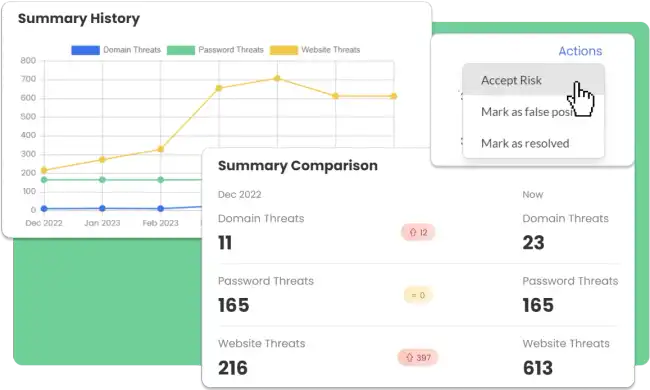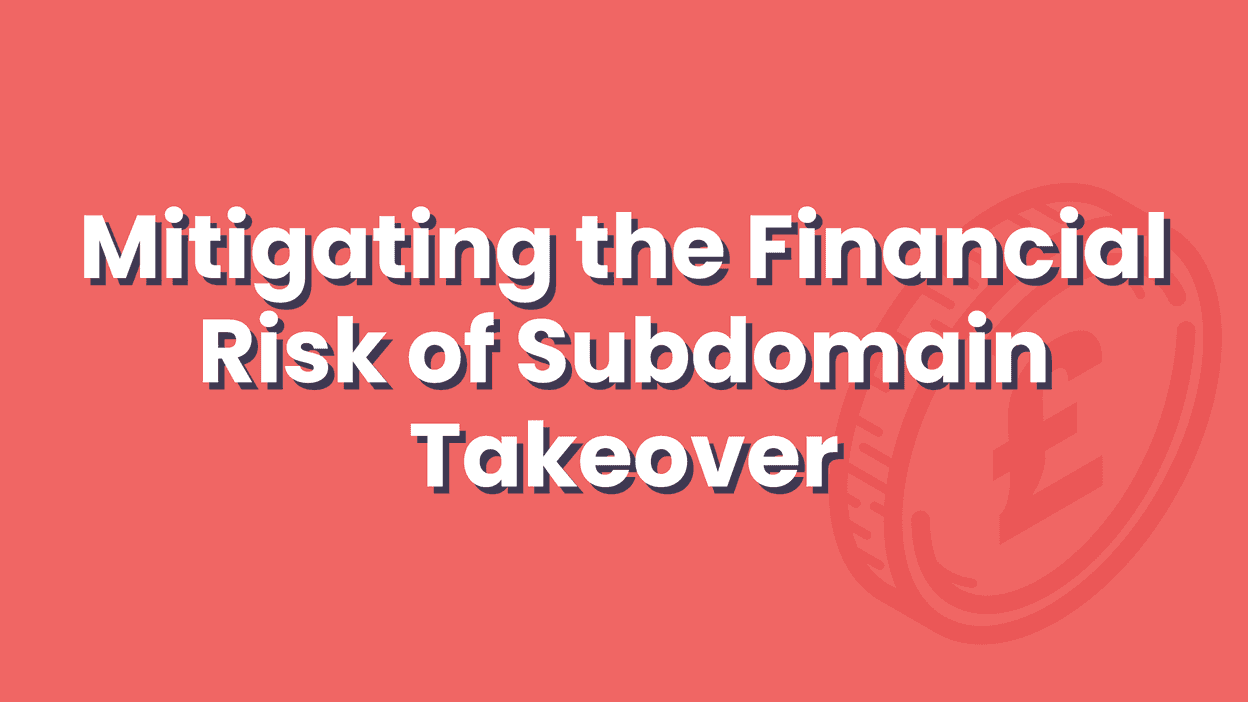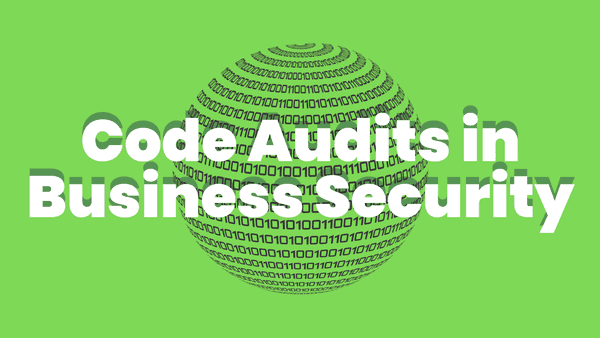Subdomain takeovers have emerged as a significant threat, resulting in substantial financial losses for organisations worldwide. On average businesses pay £1K to Bug Bounty for a subdomain takeover. This article highlights the costs associated with subdomain takeovers and ways businesses can minimise risks.
Subdomains are important parts of a company's website, used for hosting web apps, APIs, or services from other companies. However, when improperly managed, subdomains can become vulnerable to takeover by malicious actors. These takeovers can lead to reputational damage, data breaches, and financial losses.
A subdomain takeover occurs when an attacker takes control over one of your unused subdomains. This is usually when DNS records are still configured on a subdomain which was once used by a third party, but your host is no longer providing content.
A bad actor can leverage this subdomain to host their own content, read cookies, perform cross-site scripting, or even circumvent content security policies. They may be able to leverage this to access confidential information or launch a phishing campaign.
OnSecurity's threat intelligence tool, Radar, plays a crucial role in identifying and mitigating the risks associated with subdomain takeovers. Radar analyses and applies real-time monitoring to identify areas vulnerable to malicious activity and alerts you of hidden aspects of your attack surface. By always scanning for vulnerabilities, Radar provides proactive threat intelligence, enabling organisations to safeguard their subdomains and mitigate potential risks.

What risks are associated with Subdomain Takeovers?
Many organisations underestimate the financial implications of subdomain takeovers. The costs associated with a subdomain takeover extend far beyond remediation efforts and may include:
- Loss of Revenue: A compromised subdomain can disrupt critical business operations, leading to downtime and loss of revenue. Even a short service interruption can cause financial losses and harm customer trust in e-commerce platforms and online services.
- Regulatory Penalties: In industries governed by strict compliance standards, such as finance or healthcare, a subdomain takeover resulting in a data breach can trigger regulatory investigations and hefty fines. Violations of data protection laws, such as GDPR or CCPA, can incur substantial financial penalties and legal expenses.
- Reputational Damage: The aftermath of a subdomain takeover can tarnish an organisation's reputation and ruin customer confidence. Negative publicity stemming from security incidents can drive away existing customers and deter potential clients, leading to long-term financial repercussions.
Strategies to prevent subdomain takeover attacks
How do you mitigate risks associated with subdomain takeovers? OnSecurity recommends disabling DNS records that point to services that are no longer in use. Other good practice includes:
- Regular Subdomain Inventory: Conduct periodic audits to identify all active subdomains associated with your organisation. Use tools like Radar to watch for exposed subdomains that could pose security risks.
- Secure Configuration Management: Adopt secure configuration practices for subdomains, including strong authentication mechanisms, encryption protocols, and access controls. Regularly review and update configurations to mitigate vulnerabilities and enforce compliance with security policies.
- Vulnerability Patching: Stay vigilant against known vulnerabilities and security weaknesses in subdomain infrastructure. Promptly apply security patches and updates to mitigate the risk of exploitation by malicious actors.
- Employee Training and Awareness: Educate employees about the risks of subdomain takeovers and promote cybersecurity best practices within the organisation. Encourage staff members to report suspicious activities or unauthorised access attempts promptly.
- Incident Response Plan: Develop a comprehensive incident response plan to effectively address subdomain takeovers and other security incidents. Define roles and responsibilities, establish communication protocols, and conduct regular drills to ensure readiness during a breach.
Using proactive security to reduce the risks
Radar helps businesses identify exposed subdomains and remove the risk associated. . By taking proactive measures to secure their subdomains and leveraging advanced threat intelligence tools like Radar, organisations can mitigate the financial risks associated with subdomain takeovers and safeguard their digital assets effectively. Investing in robust security measures not only protects the bottom line but also reinforces trust and confidence among customers and stakeholders in an increasingly interconnected digital ecosystem.
Get an immediate overview of your threat landscape for free today!




